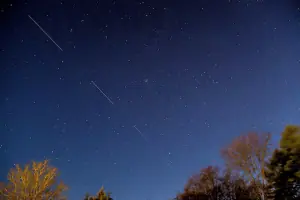A star to explode today, and it will be seen through naked eye
The star T Coronae Borealis, located in the Northern Crown constellation, is approaching a massive nova explosion, which occurs once every 80 years, according to the astronomers
This spectacular explosion will be visible to the naked eye without any telescope, marking a rare opportunity for astronomy enthusiasts since 1946.
T Coronae Borealis: A unique astronomical phenomenon
This star consists of a binary star system, which includes a red giant and a white dwarf. The red giant, as it ages, is cooling down and shedding its material into space, while the white dwarf star, which has exhausted its fuel, is absorbing this material.
Over time, as the white dwarf continues to absorb the material from the red giant, a point is reached where a thermonuclear explosion occurs. This explosion causes a tremendous increase in the star’s brightness, making it visible from Earth without the need for a telescope.
Read more
NASA astronauts ‘Butch and Suni’ return to Earth after drawn-out mission in space
When will the nova be visible?
Experts suggest that this rare astronomical phenomenon may occur on March 27, and it could be visible to the naked eye for several nights. Its brightness could rival that of the North Star in the night sky, which is the 48th brightest star in the sky.
When has the nova been observed in the past?
Historical records show that the explosion of T Coronae Borealis was documented in 1787, 1866, and 1946, indicating that this event is expected and occurs regularly. A similar pattern is also associated with Halley’s Comet, which passes near Earth every 76 years.
Experts’ opinion
According to Frank Marchis, an expert at the SETI Institute, detailed monitoring of T Coronae Borealis has been ongoing since September, with signs emerging that predict the upcoming explosion. However, this is still a theoretical study, and its results are not yet fully confirmed.
Dr Hounsell, a researcher at NASA’s Goddard Space Flight Center, stated that this is a “once-in-a-lifetime” event, which could inspire young astronomers to directly observe a cosmic phenomenon, ask questions, and collect their own data.
This nova event will be a rare opportunity for those interested in astronomy, offering them a chance to witness a spectacular celestial phenomenon in the sky.
For the latest news, follow us on Twitter @Aaj_Urdu. We are also on Facebook, Instagram and YouTube.





















Comments are closed on this story.